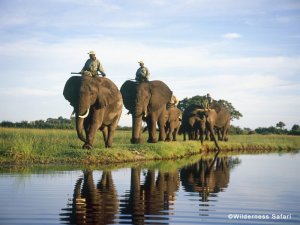book review by Steven Woodruff
Paul Theroux’s most recent novel “The Lower River” (2012), his “Dark Star Safari” (2002) and his latest travel narrative “The Last Train to Zona Verde” (2013) are all Africa stories. Now 72, it seems clear he’s thinking hard about where his writing career began. He’s also still pounding away at themes that have figured prominently in his writing on that continent: poverty, politics, history, and the profound influence of hope and loss embedded in Africa’s wild places.

But “Zona Verde” feels different. There is more of Mr. Theroux in these chapters. The oftentimes blunt, critical outlook is still there but he’s more engaged with people, and often more honest about how he feels than we have seen him up to now. By the end of his depressing sojourn in Angola’s capital Luanda, he’s ready to pack in going it alone. The title comes from a train trip into the Angolan bush that he never takes. The double edged subtitle continues: “My Ultimate African Safari”. His traveling companion, an Angolan film maker, dies unexpectedly. Theroux, wilted by the ever present poverty, degraded surroundings, and persistent xenophobic pressure in a hostile land, finally calls it quits. His route takes him from Cape Town, through Namibia, and finally on an overland gauntlet to Luanda. Along the way are searching forays into the Cape Town townships, a lengthy sojourn with the click talkers in Namibia’s western desert, an unexpected stop at an upscale safari camp in the Okavango Delta, and a freakish layover on the road to Luanda where he and his traveling companions cross paths with a rite of passage ceremony for a group of teenage Kwanyama girls.

The book opens in Namibia on a trek with the Ju/’hoansi bushmen. It had been a lifelong dream of Theroux’s to travel among them and witness a people not just clinging to an uncontaminated way of life but beating the odds against modernity. But the whole affair turns out to be something of a pretend reenactment. It prefigures a recurring theme of a floundering humanity on the great continent where colonialism, war, Chinese meddling, and oil have taken heavy tolls. From here the book flashes back to Cape Town where the author revisits places from “Dark Star Safari”. After leaving South Africa Theroux heads north along the left side of the continent toward an undisclosed final destination.
There are some excellently made portraits in “Zona Verde”. At Etosha National Park he is chauffeured through the bushland by Tony, an American in charge of Namibia’s Millennial Challenge Program for USAID who challenges Theroux’s ingrained negative perceptions about the effectiveness of NGOs and donor nations operations in Africa. At the Namibian, Angolan border a tough young woman named Vickie escorts the author past a knot of young toughs and through the menacing labyrinth of border protocol. Camillo and his Land Cruiser for hire get a detailed biography along the potholed road to Luanda. Camillo is in turns, blustery, drunk, sympathetic, caught up in the never ending dysfunction of impossible circumstances as he bribes his way along the road toward the capital.

There is a cloud hanging over much of “Zona Verde”. Three of his contacts die in the progress of the journey which took place in 2011. The chapter titles, The Frontier of Bad Karma, This is What the World Will Look Like When It Ends, Luanda: The Impoverished City, give you a summation. The question posed in the last chapter (What Am I Doing Here?) has been a refrain through much of the Angola part of the trip. With his credit card hacked, low on cash, and still popping gout and malaria pills he decides it’s time to leave. We never learn how he gets back to Cape Town and the trip that might have carried him overland as far as Timbuktu comes to a quiet end in a township market stall, “not the end of travel….but the end of this sort of travel”.
The Angolan Ministry of Tourism likely will not have much good to say about “Zona Verde”. In his books, Theroux has taken many places to task but nothing quite like the way he sticks it to Angola. He is warned from the beginning not to go there. “Bad people… You will get sick. You will die”, says one of his road acquaintances. His sulfurous experience, filled with a blunt hostile discrimination aimed at the outsider, mirrors what Noo Saro-Wiwa discovers in her Nigerian travel book, Looking For Transwonderland. Both find an unyielding urban toxicity, nations and whole peoples ruined by entrenched kleptocracies and oil money. Theroux’s book seems less an account of simply being somewhere than something fought for and barely won.
(The Last Train to Zona Verde chronicles a 2011 trip. It was published by Houghton Mifflin Harcourt in 2013 ISBN 987-0618-83933-9. Looking for Transwonderland Travels in Nigeria is published by Soft Skull Press/Counterpoint 2012 ISBN 978-1-61902-007-8 Follow the link for my review of The Lower River on wordpress.)


Dear brother,
You write real good. PT deserves to spend the remainder of his fascinating travel-weary life just reminiscing from the north shore of Oahu. I think he has already begun.
Didn’t we already share an article about him turning 80?
Douglas
LikeLike